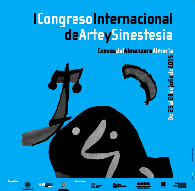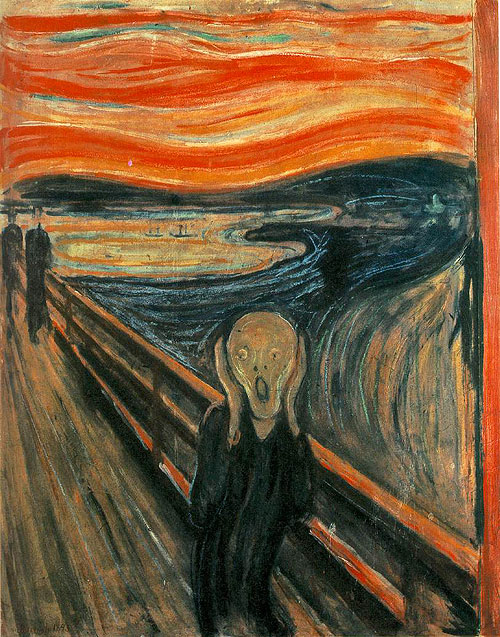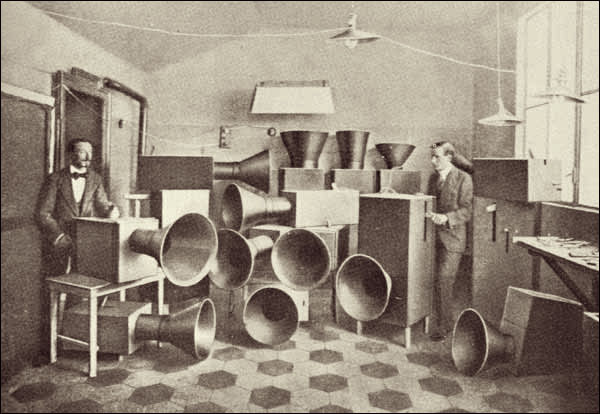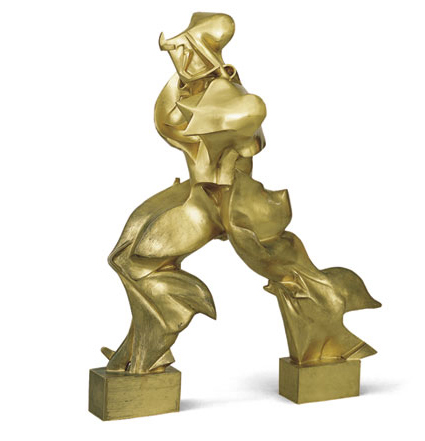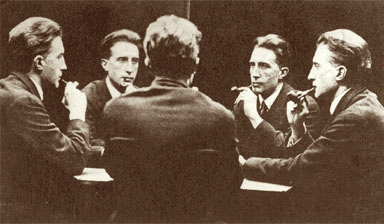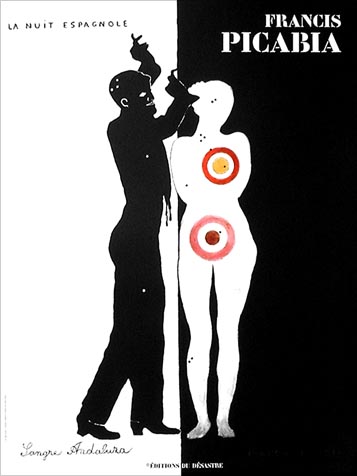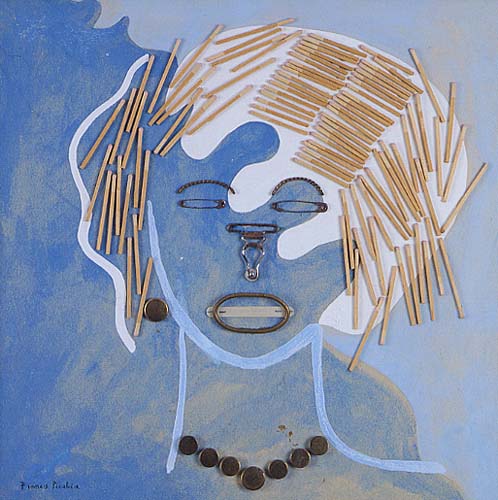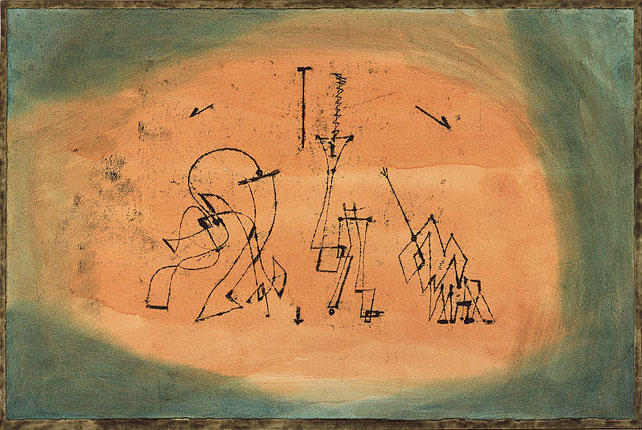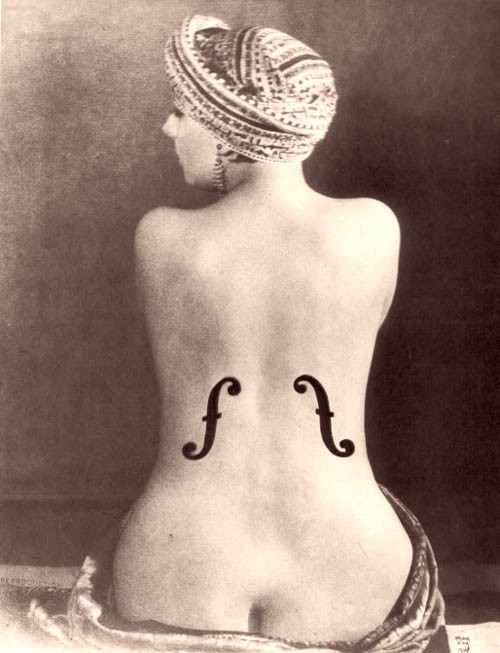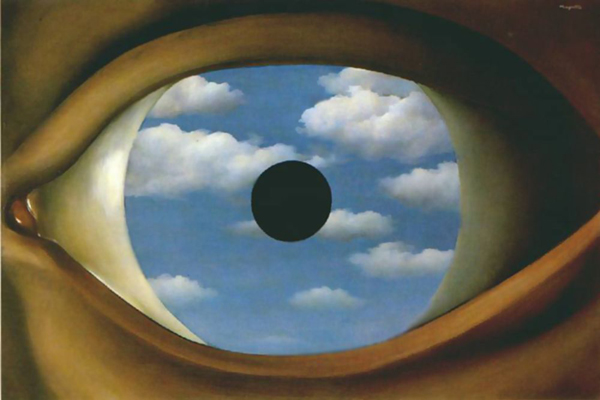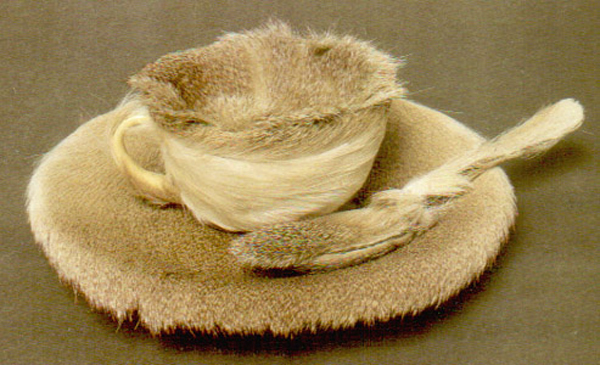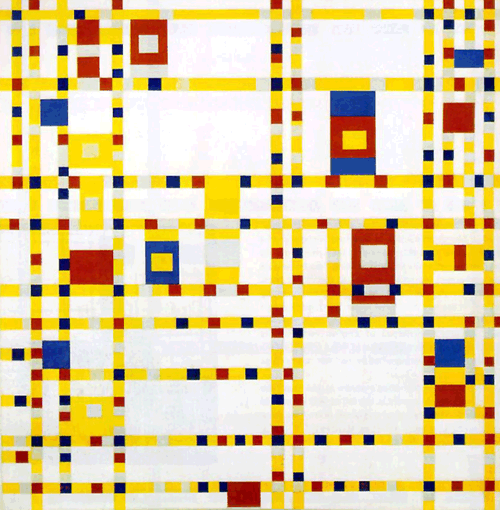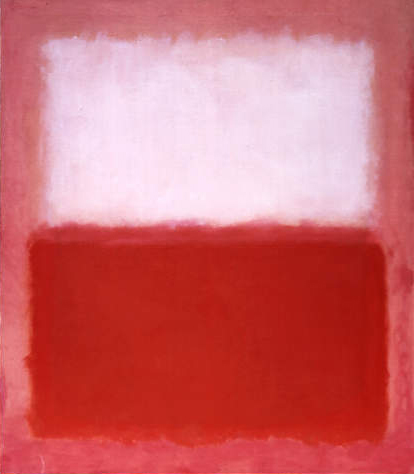"Art and Synesthesia: in search of the synesthetic experience" by Dr. Hugo Heyrman Lecture presented at the First International Conference on Art and Synesthesia Primer Congreso Internacional sobre Arte y Sinestesia 25th - 28th July, 2005 - Universidad de Almería, Spain |
||||||||||||||||||||||||||||||||||||||||||||||||||||||||||||||||||||||||||||||||||||||||||||||||||||||||||||||||||||||||||||||||||||||||||||||||||||||||||||||||||||||||||||||||||||||||||||||||||||||||||||||||||||||||||||||||||||||||||||||||||||||||||||||||||||||||||||||||||||||||||||||||||||||||||||||||||||||||||||||||||||||||||||||||||||||||||||||||||||||||||||||||||
Abstract The objective of this study is to come to a better understanding of the 'synesthetic experience', especially in the context of art. It consists of two parts: in the first part, I review naturally occurring synesthesia. In the second part, I discuss created forms of synesthesia in art. My starting point is the hypothesis that 'synesthesia-phenomena' are at the roots of all artistic practice. The approach is multidisciplinary and from a philosophy of art perspective. It will be argued that 'art as a synesthetic experience', and 'synesthetic experiences by synesthetes', share certain basic concepts: the making of new connections between the senses. In the arts, the search for correspondences and complementarities between the senses is essential. Artists have brought the 'synesthetic experience' to the surface —to share their vision with the world. The intention is to analyze the impact of synesthetic approaches as experiments in art. The focus will be on a visual presentation of artworks by artists/pioneers, as study case examples of early modern art movements; Expressionism, Futurism, Dada, Surrealism, De Stijl and Abstract Expressionism. (*) The 'Manifesto of Surrealism' has improved on the Rimbaud principle that "the poet must turn seer". Art and synesthesia go hand-in-hand. (*) I shall discuss the work and thoughts of twelve key figures: Edvard Munch, Piet Mondrian, Francis Picabia, Paul Klee, Umberto Boccioni, Luigi Russolo, Marcel Duchamp, Anton Bragaglia, Man Ray, René Magritte, Mark Rothko and Meret Oppenheim. Write-up One of the first poets of the modern metropolis, Charles Baudelaire wrote his well-known sonnet Correspondences: "Les parfums, les couleurs et les sons se répondent", a poem in which he stresses the relations of the different sensorial perceptions. In his exploration of spiritual space and depth, Baudelaire was intrigued by the intermingling of the senses, when he wrote: "What would be truly surprising would be to find that sound could not suggest colour, that colours could not evoke the idea of a melody, and that sound and colour were unsuitable for the translation of ideas, seeing that things have always found their expression through a system of reciprocal analogy." (**) The human sensorium; touch, taste, smell, sight and hearing have synesthetic qualities in their interactive connections. We see the 'synesthetic experience' particularly in all forms of art —in poetry, painting, sculpture and music. The 'synesthetic experience' serves as a means to unify the arts through a psychological unity of the senses. Synesthesia refers to the transfer of qualities from one sensory domain to another, to the translation of texture to tone or of tone to colour, smell or taste. Because the various modes of art rest on and appeal to different senses, synesthesia correspondences among the senses and synesthesia can point to similarities and analogues, as well as to metaphors or differences among the artistic forms. The old dream of the artist to let all senses melt into a total synesthetic experience can also be found in the spectacular and the ever-present electronic media. As a consequence of the new interactive media (the explosion of information and knowledge), our consciousness, senses and body will emerge into new experiences with unlimited synesthetical qualities: Tele-synesthesia —instant, global and multi-sensory. The content of a medium is the preceding medium, wrote Marshall McLuhan. An inevitable consequence of this rule is that one who strives for a deeper content always lands up at the previous medium:
If we examine the development of art history in relation to synesthesia, it moves from the classical Greek theatre (deus ex machina) to the arena games of the Romans, from the decadence of the baroque period, to Richard Wagner operas as 'Gesamtkunstwerk', from the birth of film, towards the Panorama's, Panoptica and Nocturama's of the 19th century. 'Synesthesia' also played an important role in the Futurist actions, the Dadaist and Surrealist spectacles, Antonin Artaud's theatre of cruelty, and in the more recent 'action-kunst', performances, happenings and Fluxus. Today, 'synesthesia' is an important factor in computer generated interactive art forms. After these considerations, we may confirm that 'synesthesia' has always been an underlying basic principle in the aesthetic experience of the arts. Without a synesthetic way of looking at the world, there would be no art. (**) BAUDELAIRE, CHARLES, The Painter of Modern Life and Other Essays, transl. and ed. by Jonathan, Mayne (London: Phaidon, 1964), p. 116. 1. Synesthesia: the united senses of the mind
All art constantly aspires towards the condition of music. —Walter Pater Music (as a form of expression) is a perfect symbiotic model of unity; matter, form and content are one. Music allows the individual to experience deep and intense emotions. Sound is a 'unifying' sense —creating an immediacy of effect. To some degree, all experience is synesthetic because the 'synesthetic experience' is the result of 'the united senses of the mind'. The synesthetic process may be clarified by the diagram below. The dotted lines starting at the terminus of each sensation (at the red arrowheads) and intersecting the bands or channels of various senses might be taken to represent the mechanism (scanning and combining) of the common sense. This diagram may be read downward and is self-explanatory.
Life is a continuous synesthetic experience, seeing, smelling, touching, hearing, tasting —the world discloses itself to us through the senses. The neurological condition 'synesthesia' is a responding to a stimulus of one sense modality with sensations which belong to another sense modality. In 1883, Sir Francis Galton made the first scientific reports, describing the experiences of synesthetes, (he called them 'seers') (1). Now, we know that the synesthetic experience of a synesthete is a real and concrete sensory phenomenon. Synesthesia seems to be a natural form of virtual reality. The following forms of synesthesia(s) are showing how many variations in normal brain function are possible:
Synesthesia is divided into two categories: 1) two-sensory (the crossing of two senses), and 2) multi-sensory (the crossing of three or more senses). The possible varieties of synesthetic experience in connecting the five senses seem endless, taken into consideration that within these variations, each person's individual form of synesthesia is unique. The most widespread form of synesthesia is the translation of sounds to colors (3). Another fact is that vision is almost always the responsive modality, not the trigger. It is also interesting to note that most people who experience synesthesia, describe themselves as having excellent memories. One of the most famous cases of synesthesia is that described in Aleksandr Luria's book 'The Mind of a Mnemonist' (1968) (4). Dr. Luria, a Russian neurologist discusses the case of 'S' (Solomon-Veniaminovich Shereshevsky), a man who had multiple forms of synesthesia; he could 'feel' images, 'taste' colors, and 'smell' sounds. His memory was so perfect that he could recall every minute of his life in detail. The 'united senses of the mind' is a wonderful metaphor for 'unity in diversity'. 1.2. Are synesthetes people of the future? Indeed, synesthetes are in some sense, people of the future. Some features of human evolution can be deduced from 'synesthesia-phenomena' directed studies. Also 'intuition' appears mostly in a synesthetic form. To apprehend reality as fully as we can, we need to experience it in as many forms as possible, and synesthetes have in some sense a richer experience of reality than other people —a richer synesthetic capacity often means a stronger memory. "Synesthesia is seven times more common among artists, novelists and poets, and creative people in general," says neuroscientist Dr. Ramachandran, "artists often have the ability to link unconnected domains, have the power of metaphor and the capability of blending realities," he says (5). Several questions are still waiting for an answer: "what is the difference between synesthete and non-synesthete brains?", "can synesthesia be learned or cultivated?" and "will it ever be 'genetically' possible, to become a synesthete?" 1.3. The metaphorical mind "It is imagination that first taught man the moral meaning of color, of contour, of sound, and of scent. In the beginning of the world it created analogy and metaphor." —Charles Baudelaire We can define a metaphor as a figurative expression, which always involves a transfer between two different contexts. This means that metaphors are not only a figure of speech, but also a figure of thought. It can be said that: "art serves as a portal to metaphors of imagination".
A metaphor is like a mental encounter; it can produce a flash of insight. The poetic form of the metaphor allows to counter-balance rational thinking with a creative potential, by making the words more faithful to their sensual origin. Metaphors are grounded in our bodily experiences in the world. Artists use metaphors to bridge differences between seemingly dissimilar images and ideas. In art, synesthesia and metaphor are united. Through the arts, the synesthetic experience became communicable, and blended with a personal vision. The origins of the synesthetic experience are to be found in painting, poetry and music (visual, literary and musical). To some extent, all forms of art are synesthetic. Of course there is an important difference between 'personal synesthesia' and 'created synesthesia': 1) For a synesthete, synesthesia is an integral part of his/her sense perception (a natural-born synesthete). 2) For an artist, synesthetic art is the result of an artistic intention (a human-made form of synesthesia).
"Artistic experiments with sensory fusion are not only historically interesting, but may also contribute to present synesthesia research" concluded Crétien van Campen (6). Indeed, the synesthetic experience has made an impact on human society, mainly through the powerful forms of synesthetic expression in the arts, and the artists' engagement with the world. 1.4. Synesthesia and the future of the senses "The poet makes himself into a seer by a long, tremendous and reasoned derangement of all the senses." —Arthur Rimbaud Rimbaud's "reasoned derangement of all the senses" is focused on liberating their potential. His poetry reflects the immediacy of experience, intensified and enriched by a confusing and intermingling of different sensations. Regarding the history of synesthesia, Richard E. Cytowic reminds us that: "Although medicine has known about synesthesia for three centuries, it keeps forgetting that it knows... subjective experience, such as synesthesia, was deemed not a proper subject for scientific study" (7).
Works of art are literally pregnant with meaning. The highest form of symbiosis between synesthesia and metaphor happens in art, because synergy is the essence of the living present and the essence of art. Basically, science examines and explains 'how' and art provides a vision of 'why'. Art points a direction, and science provides the transportation to get you there. Today, there is an increasing attention for the subject of synesthesia; online, in the media, in publications, conferences, symposia, scientific research, and in the arts. Synesthetic experiences are becoming more and more part of a daily awareness. Today, the ultimate synesthetic art form is still cinema. About the senses, Laura Marks wrote: in film, vision (or haptic visuality) can be tactile, "as if touching a film with one's eyes", and further, "the eyes themselves function like organs of touch" (8). Through the art and technology of synesthetic cinema (expanded cinema) a filmmaker can, "express a total phenomenon —his own consciousness" (9). Synesthetic cinema, more than any other medium, has demonstrated a trend towards the 'polymorphous' (having many forms or functions) —the intercorrelation of the four modes of human consciousness: thought, intuition, emotion, and sensation. Powerful combinations of computer multimedia, virtual reality, and holographic cinema hold the promise for further complete expression of the synesthetic experience. Is cinema becoming an individual form of art? At the moment, digital films are produced anywhere by anyone and are accessible on the global network, as real-time experience, as interactive space, as interconnectivity. In the near future, our senses will become 'travelling senses' and tele-synesthetic (10). New research indicates that neurological discoveries about brain function and responses to stimuli can offer insight into how the brain develops metaphors and interprets art. Neuroscientist Dr. Ramachandran emphasized that these theories and observations are "no more than hesitant first steps toward a science of art —towards discovering artistic universals —the new science of neuroesthetics" (11). 2. Created synesthesia: the synesthetic experience in art Art does not reproduce the visible; rather, it makes visible. —Paul Klee From about 1900 to 1950, the 20th century began with a growing vitality, a fascination for machines, science and technology, introspection, experiment, change, and innovation. The artists used the concept of synesthesia to cross borders in art, inspired by the redefinition of time and space by scientists, philosophers and Einstein's conversion of matter into energy (E = mc2). A wave of avant-garde movements sprang up in rapid succession. The 'fin de siècle' feeling turned into an exploration of new horizons, a liberation of the imagination and a revolutionary extension of the concept of art. These are the origins of Modernism or modern art.
The modernist movement expanded the cultural boundaries of poetry, fiction, drama, painting, music and architecture. A new era opened. "Il faut être absolument moderne" as the French poet Arthur Rimbaud, once told us. Rimbaud's work has often seemed to embody the escape from 19th century romantic humanism sought by the 20th century modernist avant-garde.
Listen to this painting —looking at this painting is like hearing a silent, inner scream. Munch's expression of a 'synesthetic experience' was brought to a hallucinatory level, a pictorial metaphor of primal fear: you scream and scream but no one can hear you. About 'The Scream', Munch wrote: "I was walking along a path with two friends – the sun was setting – suddenly the sky turned blood red – I paused, feeling exhausted, and leaned on the fence – there was blood and tongues of fire above the blue-black fjord and the city – my friends walked on, and I stood there trembling with anxiety – and I sensed an infinite scream passing through nature." Munch was mainly concerned with universal themes of love, fear and death. He internalized his colours to a high degree. 'The Scream' is regarded as an icon of the existential despair of modern man. It had a major influence on the development of German Expressionism in the early 20th century. Influences: Toulouse-Lautrec, Vincent Van Gogh, Pierre Bonnard, Søren Kierkegaard, Friedrich Nietzsche.
The Italian Futurist, Luigi Russolo came to sounds from painting through poetry. Russolo invented a series of individual instruments 'Intonarumori'. They were named and categorized according to their sound, its pitch, frequency, and intensity —creating a music that let the instruments "speak for themselves". Russolo presented his musical theories in a manifesto entitled 'L'arte dei rumori' (The Art of Noises) in 1913 (12). The noise-generating instruments (hand-activated large scale boxes with megaphones attached) allowed the inclusion of 'noise' into musical composition. Russolo's first 'art-of-noises' concert for 18 'Intonarumori', caused a huge scandal in Milan (1914).
With the 'art-of-noises', Russolo wanted to open the concept of 'music' to the very noises that music traditionally excludes. Russolo participated in all Futurist soirées and exhibitions. In 1914 Russolo and Marinetti gave twelve performances of the 'Intonarumori' at the London Coliseum. Marinetti claimed that 30,000 people had witnessed the music of the future. In 1921 Russolo held three concerts in Paris with an orchestra of twenty-seven 'Intonarumori'. Russolo's noise instruments found their uses in silent films and influenced musicians and composers such as Maurice Ravel (L'enfant et les sortleges), Eric Satie (Parade), and Igor Stravinsky (Rite of Spring).
Influences: Filippo Marinetti, Henri Matisse, Henri Bergson, Guillaume Apollinaire, Umberto Boccioni.
Boccioni puts speed and force into sculptural form, as a search for 'simultaneity', and for a 'synthesis' between what is remembered and what is seen. The figure strides forward, surpassing the limits of the body, its lines ripple outward in curving and streamlined flags, as if molded by the aerodynamic of its passing. Boccioni had developed these shapes over two years in paintings, drawings, sculptures, and studies of human musculature. The result is a three-dimensional portrait of a powerful body in action, participating in the universal dynamism (13). Boccioni implies not only that his tightly compressed subject is so dynamic that it must burst its four-sided confines, but that it is a fragment of a constantly changing visual experience. It reflects a desire to go beyond the world of machines and, perhaps beyond ordinary senses (14). Umberto Boccioni was the Futurism's most gifted artist. Up to 1914 he contributed to all the main exhibitions of the Futuristic movement. Influences: Eadweard Muybridge, Etienne-Jules Marey, Henri Bergson, Edvard Munch, Paul Cézanne.
Anton Bragaglia's photography makes visible that which the eye itself cannot perceive. This ambition was achieved by means of capturing in a single image the flowing trajectories of objects in motion, made visible by long exposure times. It was one of the earliest artistic explorations of the moving image. The term 'Photodynamism' was created by Bragaglia to define the photographs of movement he made with his brother Arturo. The aim of these pioneering works was to move as far as possible from the photographic reproduction of things. Seeking a more successful means of capturing the essence and sensation of speed and motion than Etienne-Jules Marey's chronophotography, Bragaglia advanced the theory that speed applied to actions or objects renders them immaterial and invisible: "appearance is replaced by transparency". Bragaglia's photodynamics are fluid "visual transcriptions of energy." With the invention of 'Photodynamism' (1911) Anton Bragaglia made a distinctive contribution to the history of photography.
Bragaglia's concept of the moving image was influenced by Henri Bergson's ideas about the infinite continuity of time (15). 'Fotodinamismo' is significant not only for its role in providing a theoretical basis and foundation for Futurist photography, but also as the first essay on photographic theory and aesthetics of the 20th-century avant-garde (16). In 1916, Bragaglia directed his first Futurist film 'Thaïs', the scenario was based on the novel of the same name by Anatole France (a copy is preserved in the Cinémathèque Française).
The Futurists brought together the elements of sound, noise and smell into their paintings. They believed that in order to achieve the total painting, which requires the active cooperation of all the senses, these elements have to be actively brought together. F. T. Marinetti, (the founder of Futurism) took a decisive step towards synesthesia by introducing "multi-linear lyricism", "through which" he said, "I achieve that lyric simultaneity that obsesses the Futurist Painters as well". Marinetti's 'Parole in Liberta' (words in freedom) was an attempt to interpret sensory experiences (17). In Futurism, the boundaries started to dissolve between the various artistic disciplines, and an artistic quest for synesthesia was widely pursued. Futurism brought life, and a new way of representing reality in all fields, including painting, architecture, theatre, literature, sculpture, fashion and music. The Futurists can also be credited with the development of performance art and concrete poetry, which foreshadowed in their shock and compulsive nonsense the later activity of the Dadaists. Futurism has influenced every succeeding art movement. Influences: Eadweard Muybridge, Etienne-Jules Marey, Henri Bergson, Filippo Marinetti, Umberto Boccioni.
Questioning identity. Marcel Duchamp had taken a mesmerizing photograph of himself, gathered around a table —a co-presence with his additional selves. This multiple-self-portret represents five images of the artist, a mise-en-scène of a brainstorming session with himself. We see a manifestation of introspection, a reflective moment of pause in a circular tango of thoughts. Marcel Duchamp said: "The individual, man as a man, man as a brain, if you like, interests me more than what he makes, because I've noticed that most artists only repeat themselves". Marcel Duchamp's first 'ready-made' (1913), contradicted all existing concepts of art. The source of inspiration was the opposite of 'synesthesia', namely 'anesthesia': the choice of a ready-made was based on 'indifference', the total absence of good or bad taste. Duchamp shook the foundations of modern art by taking everyday objects out of their usual context and displaying them in a new environment, thus transforming them into art objects. Marcel Duchamp became one of the most influential artists in 20th century art. Influences: Etienne-Jules Marey, Guillaume Apollinaire, Raymond Roussel, Francis Picabia, Gertrude Stein.
'La Nuit Espagnole' (The Spanish Night) is one of the most emblematic paintings by Picabia —art is what the artist makes you see. Without locking his art into one category, Picabia moved between figuration and abstraction, from the very informal to a highly personal iconography where more or less explicit, more or less visionary primitive symbols intermix with sexual images or symbols. Hans Arp called Picabia 'the Christopher Colombus of art' because Picabia launched more new ideas than any other artist of the avant-garde. Francis Picabia played also a key role in transmitting synesthetic ideas to the American art world in the 1910s. Picabia went further than other contemporary artist in America in his verbal affirmation that subject matter was of no value in an art that "expresses a spiritual state (and) makes that state real by projecting on the canvas the finally analyzed means of producing that state in the observer" (18). Picabia made his claim for the power of art not only by suggesting an analogy between painting and music but also by emphasizing that the rules of painting, no less than those of music, had to be learned: "If we grasp without difficulty the meaning and the logic of a musical work it is because this work is based on the laws of harmony and composition of which we have either the acquired knowledge or the inherited knowledge... The laws of this new convention have as yet been hardly formulated but they will become gradually more defined, just as musical laws have become more defined, and they will very rapidly become as understandable as were the objective representations of nature" (19).
In this Dadaistic portret of a woman, her 'safety pins' eyes are closed. It's a configuration of a 'Collage' and an 'Object-trouvé'. A discovery is said to be an accident meeting a prepared mind. Here, the different materials and references are combined to provoke an unexpected discovery. Picabia challenges us to ask where its routes of references lead us, rather than what does it stand for? Picabia did not limit himself to just one medium. Paintings, sculptures, photographs, collages, drawing, posters, they where all used as forms of expression by the artist. The New York Dada group included Francis Picabia, Man Ray and Marcel Duchamp. They all flirted with the machine as subject matter, as a counterforce to the romantic tradition. Dada was a state of mind and a way of life. Francis Picabia's ideas still have a generative force on contemporary art. Influences: Charles Baudelaire, Stéphane Mallarmé, Robert Delaunay, Guillaume Apollinaire, Marcel Duchamp.
In this watercolor we see an interaction between three forms —a configuration of growth, patterns and traces. They might represent the abstract sound patterns of three voices, or three instruments of a performing trio. The allusion to music is strengthened by the rhythmic interplay of lines and forms. Klee himself referred to the nervously line of his drawings as a form of 'psychic improvisation'. In the work of Klee, (like Kandinsky) there are many spiritual correspondences between music and the qualities of color and form (20). His love of music —an abstract medium, was always to remain profoundly important in his life and work. Paul Klee grew up in a musical family and was himself a violinist. Inspired by his teaching at the Bauhaus in the 1920s, Paul Klee published his 'Pedagogical sketchbook' in 1925 (21). Klee's color theory, based on a continuous principle of movement, stands out as an individual position in the history of art. References to microscopic and biological processes are an integral part of Klee's world. Paul Klee was an inventive and prolific artist who worked in many different styles, managing to make each his own. His work is difficult to classify, since his unique style takes in elements of primitive art, cubism, surrealism, naïve art and expressionism. Influences: Robert Delaunay, Wassily Kandinsky, Paul Cézanne, Pablo Picasso, Henri Matisse.
An iron is transformed into a new and potentially threatening object, by the addition of a row of nails. The nails and the evocation of desire, violence, and hot metal, suggest a paradox with the work's title, 'Cadeau' the French word for 'Gift'. The idea is not only to make it useless, but also to counter its original purpose by an ambivalence of the senses. With his pioneering, experimental achievements and technical innovations, Man Ray became one of the only American artists who was central to both the Dada and Surrealist movements. Great artists of the day such as James Joyce, Gertrude Stein, Jean Cocteau and numerous others posed for his camera.
She wears a turban and earrings, her head is turned to the left in profile. She is naked except for some fabric draped around her hips. Most strikingly are the two sound-box-signs on her back —as a on a cello. A woman's body becomes a musical instrument. It allows a musician's dream to come true. The power of this image lies in the fact that it is several things at once. Man Ray is playing with the conventions of signs. Man Ray created a new photographic art, which emphasized chance effects and surprising juxtapositions. Like all art, photography creates its own reality.
Lee Miller's nude body is presented twice as a Greek statue in a modern context; surrounded by an electric pattern of light. With the lines of flashing rays, the image of the torso is charged with erotic tension. Man Ray called this technique 'Rayographs', the images (photography without a camera) are made by placing objects on light-sensitive surfaces, and like dreams, they do not represent the objects they capture, but rather evoke tones or moods. Together with Lee Miller (in Paris 1921), Man Ray also developed the technique of 'Solarization' (a mix of the properties of light, photochemistry, celluloid, and paper). Ray used his mastery of the photographic medium to explore the irrational, the metaphor, and the unexpected. Man Ray revolutionized the art of photography. Influences: Alfred Stieglitz, Francis Picabia, Pablo Picasso, Gertrude Stein, Marcel Duchamp.
Magritte makes us believe that seeing is touching at distance. He painted a visual metaphor about the tactility and softness of a woman's skin. The woman's body has been transformed, here and there, gradually into the graininess of a wooden structure. The canvas becomes a living surface, the image presents a metamorphose —a morphing of meaning. The merging forces the eye to think in a completely different way. Magritte creates multiple ways of seeing things simultaneously. Magritte shows us the impossible in the possible. The paintings of Magritte emerge from the mysteries of reality and the visible world around us.
Looking into someone's eye and seeing an endless blue sky, the painting makes allusion to the eye being the mirror of the soul. This image allows the viewer to travel into the inner space of the mind. Inner and outer worlds are one. In the 'False Mirror', the address of the eye cannot be located. René Magritte painted this canvas in the same manner that he lived his life —in strange modesty and under constant analysis. Magritte suggested new interpretations of old things in his simple and charming paintings. He invented the double reality of images, by adding layers of poetic thought and mystery. The influence of René Magritte (from Dada to Pop art) continues towards future generations. Influences: André Breton, Stéphane Mallarmé, Edgard Allen Poe, Giorgio De Chirico, Marcel Duchamp.
Oppenheim's object 'Fur Breakfast', makes references to the varieties of sensual pleasure; fur may delight the touch but it repels the tongue. And a cup and spoon, of course, are made to be put in the mouth. It provokes the viewer into imagining what the fur lined cup might feel like to drink from and forces the anti-graceful sensation on a mixture of the senses. This work, a three-dimensional sculptural assemblage, was one of the sensations of both the Paris and New York Surrealist exhibitions in 1936. Surrealism was a period of introspection that liberated the imagination. Meret Oppenheim's 'Fur Breakfast' remains one of the icons of the Surrealist movement. Influences: Max Ernst, André Breton, Pablo Picasso, Sigmund Freud, Carl Gustav Jung.
Mondrian's painting is considered to have two clear real-world inspirations: the city grid of Manhattan —an interpretation of the New York subway map, and the Boogie-Woogie music that he loved to dance to. There is a feeling of vital and pulsing rhythm, as if the composition is meant to resemble a dancing city. Using the dynamic contrast of oppositions, a resonant relationship is constructed between optical vibration and colorful visual music. Spirituality overcomes modern materialism. Mondrian dreamed of a universal composition and a new 'society of equilibrium'. His paintings are microscopic details of a cosmologic picture of the world. Influences: Helena P. Blavatsky, Theo van Doesburg, Robert Delaunay, Pablo Picasso, Jackson Pollock.
Rothko's horizontal divisions of soft floating colored spaces are an invitation to enter into the depth of the color fields, and to become totally saturated with them. The undefined background envelops the viewer and evokes a spiritual feeling of infinity. The painting has an almost breathing energy. Because of the luminous quality, the colors seem to move back and forth, as if it were another living presence. Rothko created his own biology of art. By the layering of one experience over another, Rothko's paintings seem to aspire the emotional condition of music, suspending sound in color, by radiating visually as silent music. The sensibility of the color is real and abstract at the same time. Rothko himself felt that the works could express emotions associated with universal themes such as tragedy, ecstasy, and the sublime. In this paintings, Rothko meditated on how the origins of life could function as a metaphor for the origins of consciousness. Influences: Henri Matisse, Milton Avery, Friedrich Nietzsche, Sigmund Freud, Carl Gustav Jung. Conclusion Synesthesia is an important key to understand the human mind, especially creativity, because the connection between art and synesthesia can reveal precise aspects of human consciousness with great clarity. Synesthesia and metaphor are also playing an important role in the understanding of what goes on in our brains when we look at a work of art —neuroesthetics (art as an extension of the functions of the brain). Synesthesia has influenced many artists in various fields and provided a rich background for the development of new (syn)esthetics. Modernism created the conditions for a multidimensional pictorial autonomy —perception precedes meaning, and medium precedes message. In periods of intense creativity, the search for correspondences and complementarities between the senses are increasing. Artists are the tastemakers of our experience of reality. In the arts, 'the synesthetic experience' became something to be shared. "What remains of the past", as Walter Benjamin advises, "is what we use". The complementary power of art and science are extending our horizon of perception. With the use of telematic hypermedia, synesthetic art forms will become much more sophisticated in their own right. There is a future for tele-synesthesia, to bring synesthetic experiences further into our daily awareness. —Dr. Hugo Heyrman Summer 2005 Ph.D. in Art sciences, painter, synesthesia researcher Professor at the Royal Academy of Fine Arts, Antwerp http://www.doctorhugo.org/synaesthesia/index.htm References
Note The images and documents linked here are claimed to be used under fair use as: the artworks are only used for informational and educational purposes. Their inclusion in the text adds significantly to the article because it shows famous work by artists/pioneers, to illustrate their way of working, and to place it in a historical context. This research article is located online at URL:
http://www.doctorhugo.org/synaesthesia/art/index.html Published: 2005/07/31 09:28:35 GMT || Museums of the Mind || |
||||||||||||||||||||||||||||||||||||||||||||||||||||||||||||||||||||||||||||||||||||||||||||||||||||||||||||||||||||||||||||||||||||||||||||||||||||||||||||||||||||||||||||||||||||||||||||||||||||||||||||||||||||||||||||||||||||||||||||||||||||||||||||||||||||||||||||||||||||||||||||||||||||||||||||||||||||||||||||||||||||||||||||||||||||||||||||||||||||||||||||||||||

